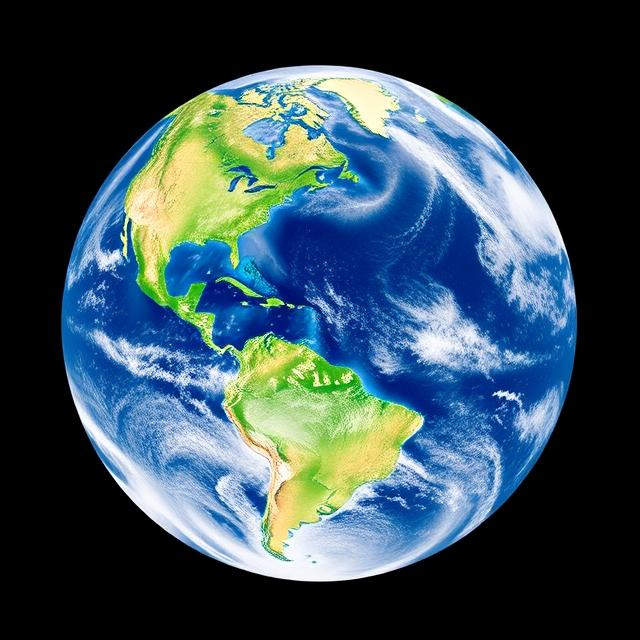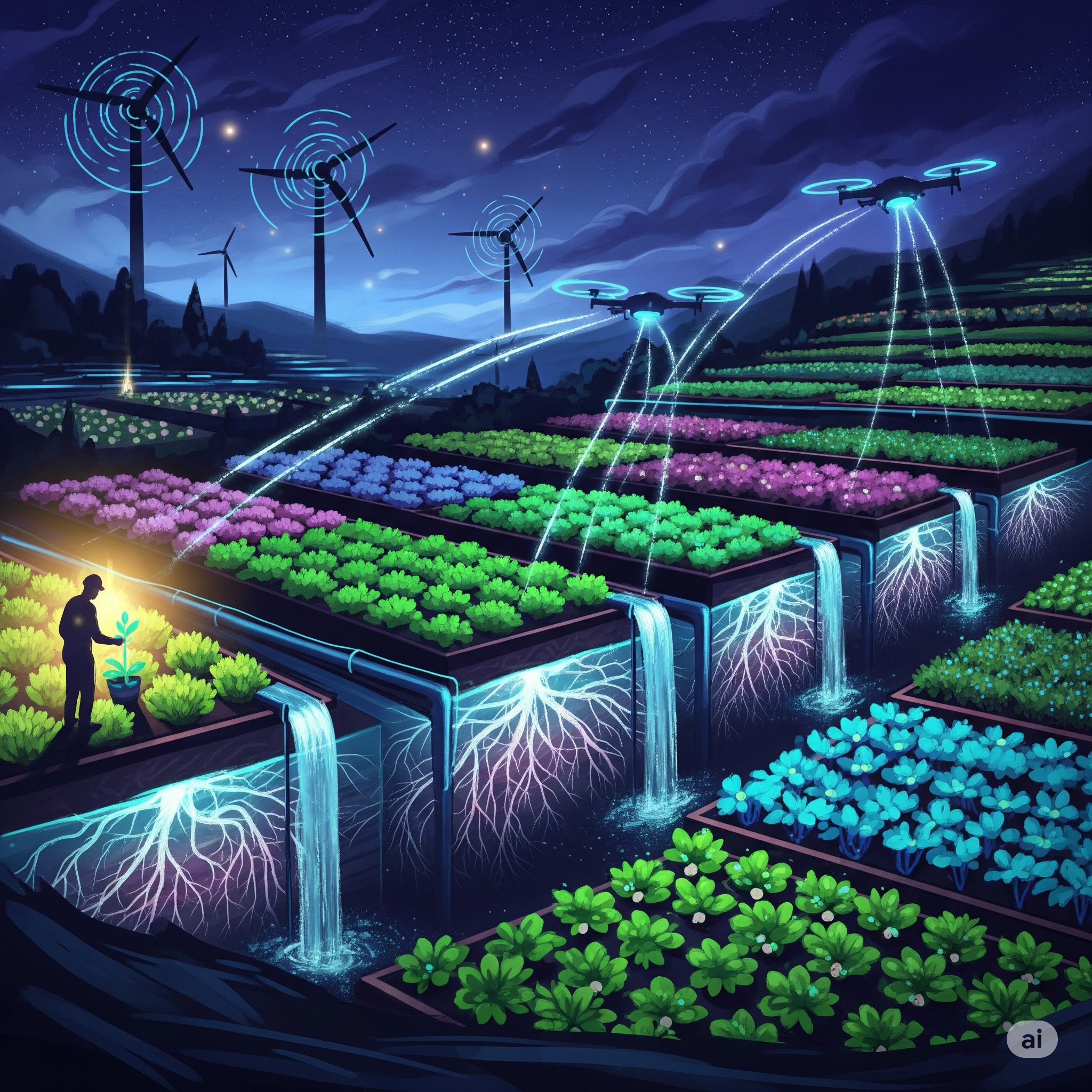Introduction
Earth’s climate system is a complex interaction of various atmospheric, oceanic, and terrestrial processes. Among the most influential natural climatic phenomena that disrupt this balance are El Niño and La Niña, collectively known as the El Niño-Southern Oscillation (ENSO). These irregular periodic variations in sea surface temperatures (SSTs) and wind patterns in the central and eastern Pacific Ocean have far-reaching consequences on weather patterns across the globe. Their impacts are felt not only in the tropics but also in temperate zones, manifesting as extreme rainfall, droughts, cyclones, and even fluctuations in monsoon patterns.
This article delves into the science of El Niño and La Niña, analyzes their effect on global weather patterns, and examines how they influence key sectors like agriculture, water resources, and coastal ecosystems, especially in vulnerable developing countries such as India.
What Are El Niño and La Niña?
El Niño and La Niña are opposite phases of the ENSO cycle, which refers to the oscillation of ocean temperatures and atmospheric conditions in the equatorial Pacific.
El Niño
El Niño refers to the unusual warming of surface waters in the central and eastern Pacific Ocean. It is associated with a weakening of trade winds and changes in atmospheric circulation. Typically occurring every 2–7 years and lasting 9–12 months, El Niño is linked with:
- Suppressed rainfall in India, Australia, and Southeast Asia.
- Increased rainfall in South America and the southern United States.
- Warmer-than-average global temperatures.
La Niña
La Niña is the opposite phase, characterized by cooler-than-average sea surface temperatures in the central and eastern Pacific and stronger-than-normal trade winds. It often leads to:
- Enhanced monsoons in India and Southeast Asia.
- Droughts in the Americas.
- Cooler global average temperatures.
Impacts on Global Weather Patterns
1. Disruption of Monsoons and Rainfall Patterns
ENSO plays a major role in disrupting global precipitation distribution.
- South Asia: El Niño years often lead to weakened Indian monsoons, causing droughts and water stress. La Niña tends to enhance monsoon activity, sometimes leading to floods.
- Australia and Indonesia: El Niño is associated with hot, dry conditions and a high risk of bushfires, while La Niña brings heavy rainfall.
- North America: El Niño tends to bring wet winters to the southern US and warmer, drier weather to the north. La Niña usually causes colder, snowier winters in the north and dryer conditions in the southern US.
- Africa: East Africa experiences droughts during La Niña and flooding during El Niño, while southern Africa experiences the opposite.
2. Increased Frequency of Extreme Events
ENSO events amplify the frequency and intensity of extreme weather:
- Cyclones: El Niño reduces Atlantic hurricane activity but increases cyclone formation in the Pacific. La Niña reverses this trend.
- Heatwaves and Wildfires: El Niño years often bring higher global temperatures, worsening droughts and forest fires in regions like California, Australia, and Amazonia.
- Floods: La Niña leads to excessive rainfall and flooding, particularly in Southeast Asia, the western Pacific, and South America.
Impact on Agriculture
Agriculture, being highly climate-sensitive, is perhaps the most affected sector during ENSO events.
1. Crop Failures and Yield Reduction
- India: El Niño events disrupt the southwest monsoon, leading to droughts that impact key crops like rice, wheat, and pulses. For instance, El Niño in 2015 caused a 12% deficit in rainfall, reducing food grain production.
- United States: The Midwest corn belt experiences temperature fluctuations and rainfall inconsistencies. El Niño can enhance yields through milder winters but La Niña can cause droughts.
- Latin America: In Peru and Ecuador, El Niño can flood fields and destroy crops, while in Brazil, La Niña may reduce soybean and corn yields due to drought.
2. Food Security
ENSO-induced crop failures disrupt the global food supply chain:
- Price volatility: Shortfalls in production increase the prices of staples like wheat, corn, and rice.
- Malnutrition: In developing nations, lower yields lead to food scarcity, undernutrition, and dependency on food aid.
- Import dependency: Countries facing back-to-back ENSO events may have to increase food imports, affecting trade balance and economy.
3. Agricultural Planning and Adaptation
Governments and farmers are increasingly using ENSO forecasts for better agricultural planning:
- Crop selection based on seasonal forecasts.
- Water-efficient irrigation techniques during El Niño years.
- Insurance schemes to reduce economic shocks to farmers.
Impact on Water Resources
Water availability is closely tied to precipitation patterns and snowmelt—all of which are influenced by ENSO.
1. Altered Hydrological Cycles
- Reduced River Flows: El Niño-induced droughts cause water levels in rivers like the Ganges, Nile, and Amazon to drop significantly.
- Decline in Groundwater Recharge: Dry spells reduce groundwater replenishment, particularly in semi-arid regions of India and Africa.
- Snowpack and Glacier Melt: In the Himalayas and Andes, shifts in snow accumulation and early melting disrupt long-term water supply.
2. Water Stress and Scarcity
- Urban and Rural Drinking Water: Shortages affect millions during El Niño-induced droughts, especially in megacities with aging infrastructure.
- Energy Sector: Reduced river flow affects hydroelectric power generation, leading to energy shortages and blackouts in countries dependent on hydropower like Nepal, Brazil, and Ethiopia.
3. Water Management Challenges
Governments must manage water resources more efficiently during ENSO years:
- Reservoir planning: Optimizing water use in reservoirs and dams.
- Desalination and reuse: Adoption of alternate water sources in coastal and arid regions.
- Rainwater harvesting: Especially important during La Niña years to mitigate floodwater runoff and enhance storage.
Impact on Coastal Regions
Coastal zones are at the frontline of ENSO-induced disturbances due to their proximity to oceanic changes.
1. Coastal Flooding and Sea-Level Rise
- El Niño causes thermal expansion of oceans, leading to temporary sea-level rise on the western coast of the Americas and parts of the Indian Ocean.
- Heavy rainfall and storm surges worsen flooding in low-lying coastal areas, damaging infrastructure and displacing populations.
2. Coral Bleaching and Marine Ecosystems
El Niño significantly warms ocean temperatures, resulting in:
- Mass coral bleaching events in the Great Barrier Reef and Indian Ocean, impacting biodiversity.
- Disruption of fish migration patterns and spawning cycles, affecting local fisheries.
- Collapse of food chains in marine environments, especially in nutrient-rich upwelling zones like off the coast of Peru.
3. Coastal Livelihoods and Fisheries
ENSO and India: A Case Study
India is particularly vulnerable to ENSO events due to its dependence on monsoon rainfall for agriculture and water.
Historical Impacts
- El Niño 2002: Led to one of the worst droughts in decades, with rainfall deficiency over 19% below normal.
- El Niño 2015: Triggered failed monsoons, heatwaves, and drinking water shortages.
- La Niña 2010–11: Resulted in excessive rainfall and floods in northern India.
Government Response
- Use of monsoon forecasting models by the Indian Meteorological Department (IMD).
- Development of drought-resilient crop varieties.
- Contingency crop planning and early warning systems for farmers.
- Strengthening of Mahatma Gandhi National Rural Employment Guarantee Scheme (MGNREGS) for water conservation works during droughts.
Future Outlook: ENSO in a Changing Climate
With climate change intensifying the earth’s energy balance, the frequency and intensity of ENSO events are expected to increase. This means more frequent climate anomalies, pushing ecosystems and communities to their limits.
Key Predictions
- Stronger El Niños and La Niñas with heightened global impacts.
- More frequent “Super El Niño” events, like those in 1997–98 and 2015–16.
- Amplified weather extremes such as mega-droughts and record-breaking floods.
What Needs to Be Done?
To mitigate the adverse effects of ENSO in a warming world, countries must adopt a proactive and integrated approach:
- Climate-smart agriculture that adapts to changing rainfall and temperature.
- Early warning systems for weather and ocean anomalies.
- International collaboration through organizations like the World Meteorological Organization (WMO).
- Community-based resilience in coastal and drought-prone areas.
Conclusion
El Niño and La Niña are not mere oceanic anomalies—they are powerful natural forces with global reach, affecting economies, societies, and ecosystems. Their influence on agriculture, water resources, and coastal areas can be devastating, especially in vulnerable regions like South Asia, Africa, and Latin America.
Understanding ENSO dynamics and investing in resilient infrastructure, forecasting systems, and community-based adaptation can significantly reduce their impact. In an era of climate change, learning to live with and adapt to ENSO will be critical for ensuring food security, water sustainability, and the protection of our coastlines.




